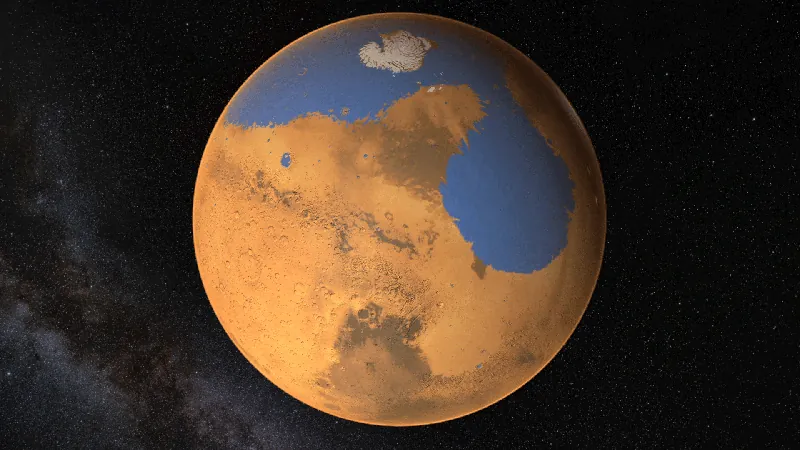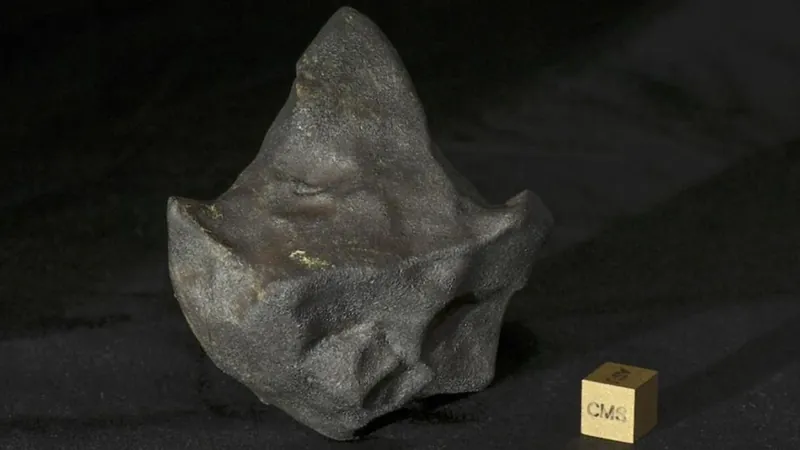
Scientists Uncover a Potentially Game-Changing Discovery: A Massive Water Reservoir on Mars that Could Reshape the Red Planet!
2025-03-30
Author: Arjun
A Deep Freeze Beneath the Martian Dust
The MFF lies at the interface between Mars's smooth northern plains and its rugged southern highlands. While long speculated to conceal more than mere dust and ash, recent investigations have revealed that it houses thick layers of subsurface ice beneath its wind-sculpted terrain. "By utilizing the latest data from the Mars Express's MARSIS radar, we've discovered that these deposits are even greater than our previous estimates—reaching thicknesses of up to 2.2 miles," stated Thomas Watters from the Smithsonian Institution, who led the research effort.
Researchers noted that the radar signatures resemble those recorded over Martian polar caps, where ice presence has already been confirmed, reinforcing the idea that the MFF could be a hidden treasure trove of water.
Enough Water to Transform Mars
If this ice were to melt completely, it could potentially submerge the entire Martian landscape under 5 to 9 feet of liquid water—equivalent to the volume of the Mediterranean region's Red Sea. This vast reservoir would make the MFF the most significant non-polar water deposit on the planet, opening up possibilities for long-term exploration, resource utilization, and even visionary terraforming projects.
Challenging Old Theories About Martian Geology
For many years, scientists have debated the formation's composition, pondering whether it was primarily made of windblown dust, volcanic ash, or dry sediments. However, the new radar data presents a compelling case for the presence of ice. "If the MFF were simply dust, we'd expect it to compact under its own weight into a denser form than currently observed," explained Andrea Cicchetti from Italy’s National Institute for Astrophysics. "Our models confirm: ice is necessary to explain our findings."
This pivotal discovery not only revises the understanding of MFF's composition but also suggests a more complex geological timeline regarding the existence of water in Mars's equatorial regions.
Why Equatorial Ice Matters for Exploration
While Mars's poles are laden with ice, landing there poses significant challenges due to the harsh conditions and energy requirements. The identification of such abundant water resources near the equator—an ideal site for future human missions—could provide a crucial asset for exploration. Colin Wilson, ESA project scientist for Mars Express, remarked, "Although the MFF's deposits are currently concealed under a thick layer of dust, every discovery of Martian ice enhances our comprehension of the planet's hydrological history and the distribution of water today."
A Climate Mystery Beneath the Surface
The presence of deep equatorial ice also invites questions regarding Mars’s climate history. How did this water accumulate and remain preserved so far from the poles? What climatic conditions allowed this ice to form? And could it conceal remnants of ancient microbial life?
"This analysis not only challenges our understanding of the MFF but also spawns a host of new inquiries," Wilson stressed. The layered design of ice cloaked by a protective veneer of dust may have safeguarded this water for millions of years, serving as a time capsule that reveals a wetter and more vibrant ancient Mars.
Conclusion: A New Frontier in Martian Discovery
As scientific instruments continue to uncover the mysteries of Mars, the potential for discovering life or understanding the planet's evolution grows stronger. The implications of this newfound reservoir extend far beyond mere curiosity; it could herald a new epoch in Martian exploration, inviting humanity to not only visit but to take steps toward possibly colonizing another planet. The waters of Mars beckon us to dive deeper into its mysteries!




 Brasil (PT)
Brasil (PT)
 Canada (EN)
Canada (EN)
 Chile (ES)
Chile (ES)
 Česko (CS)
Česko (CS)
 대한민국 (KO)
대한민국 (KO)
 España (ES)
España (ES)
 France (FR)
France (FR)
 Hong Kong (EN)
Hong Kong (EN)
 Italia (IT)
Italia (IT)
 日本 (JA)
日本 (JA)
 Magyarország (HU)
Magyarország (HU)
 Norge (NO)
Norge (NO)
 Polska (PL)
Polska (PL)
 Schweiz (DE)
Schweiz (DE)
 Singapore (EN)
Singapore (EN)
 Sverige (SV)
Sverige (SV)
 Suomi (FI)
Suomi (FI)
 Türkiye (TR)
Türkiye (TR)
 الإمارات العربية المتحدة (AR)
الإمارات العربية المتحدة (AR)